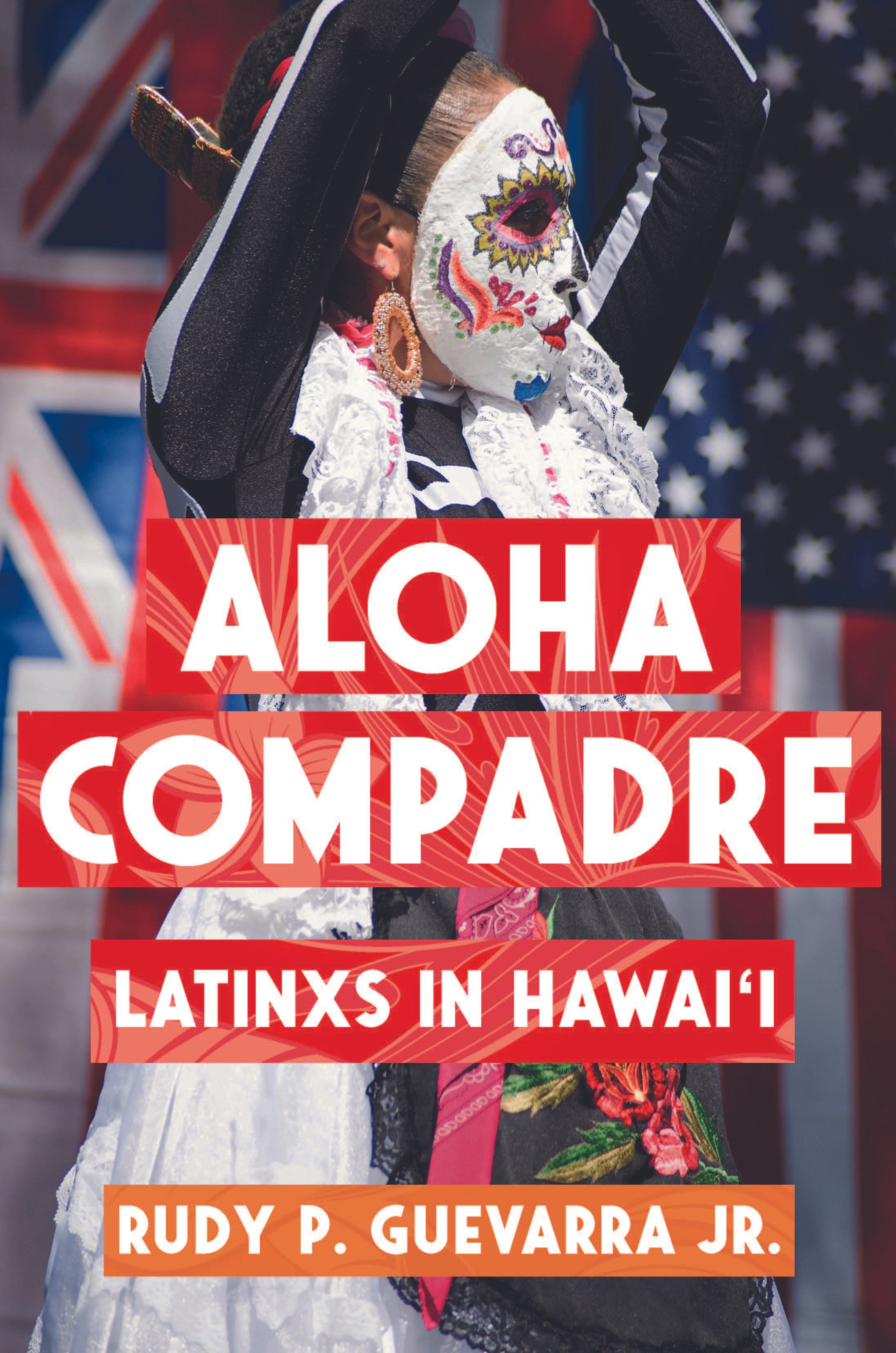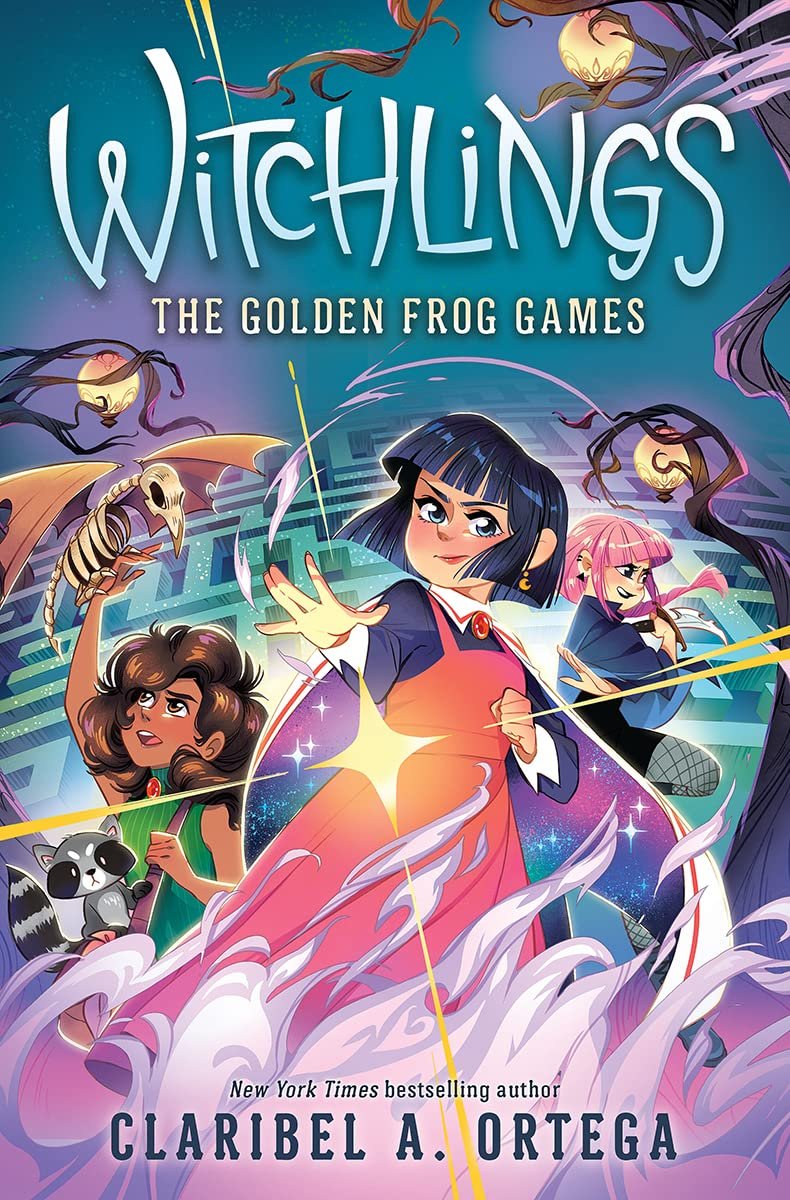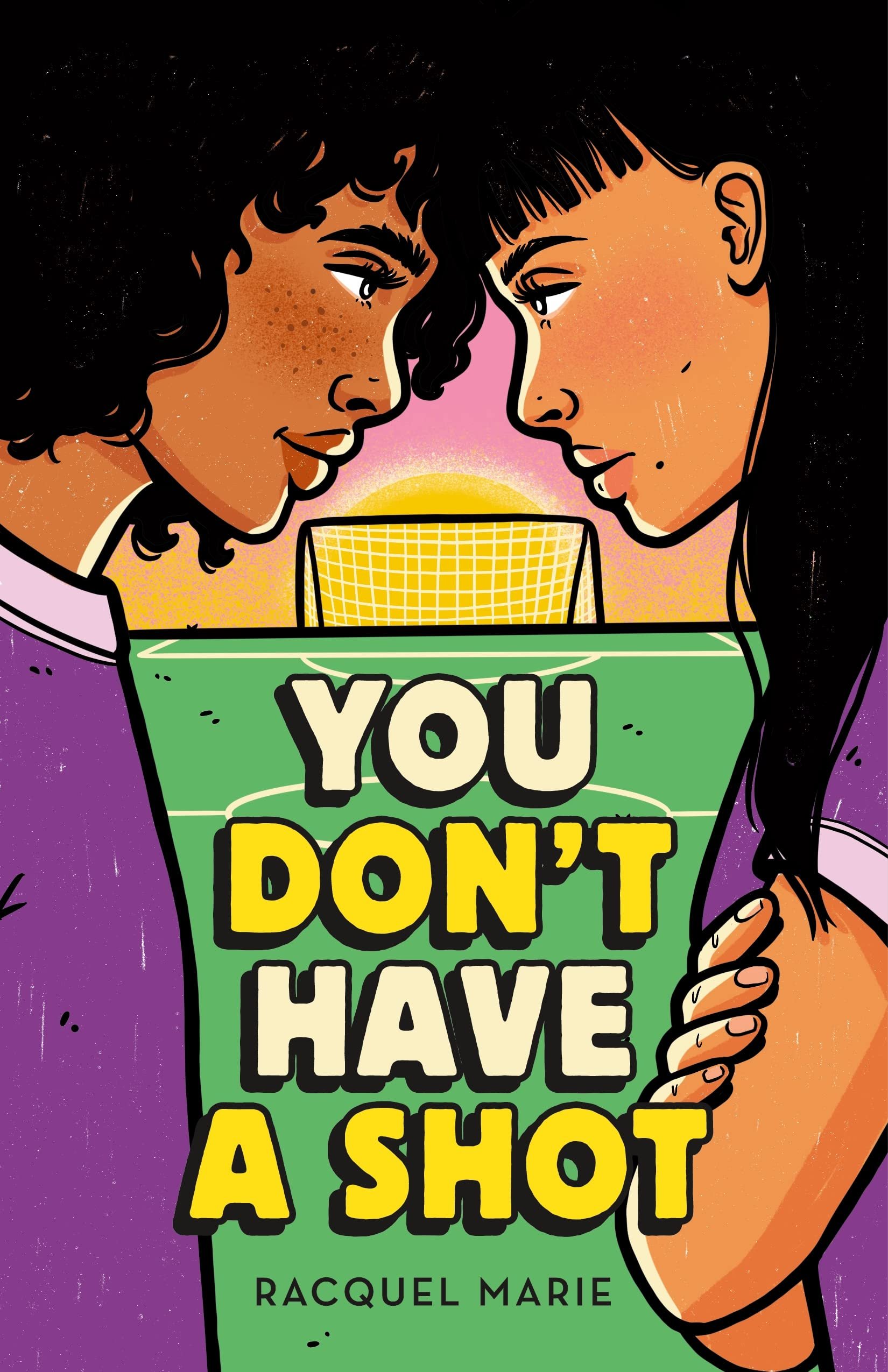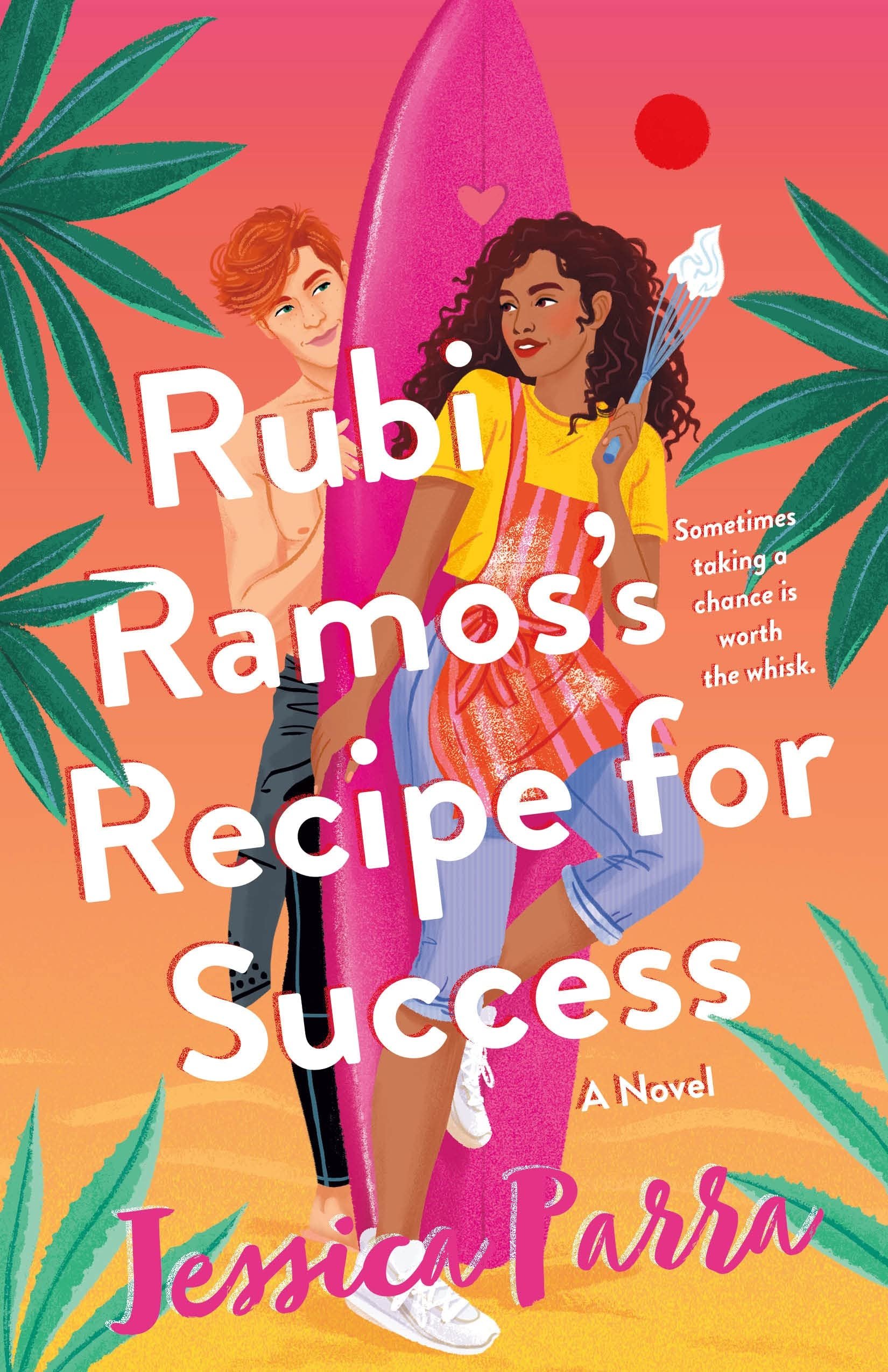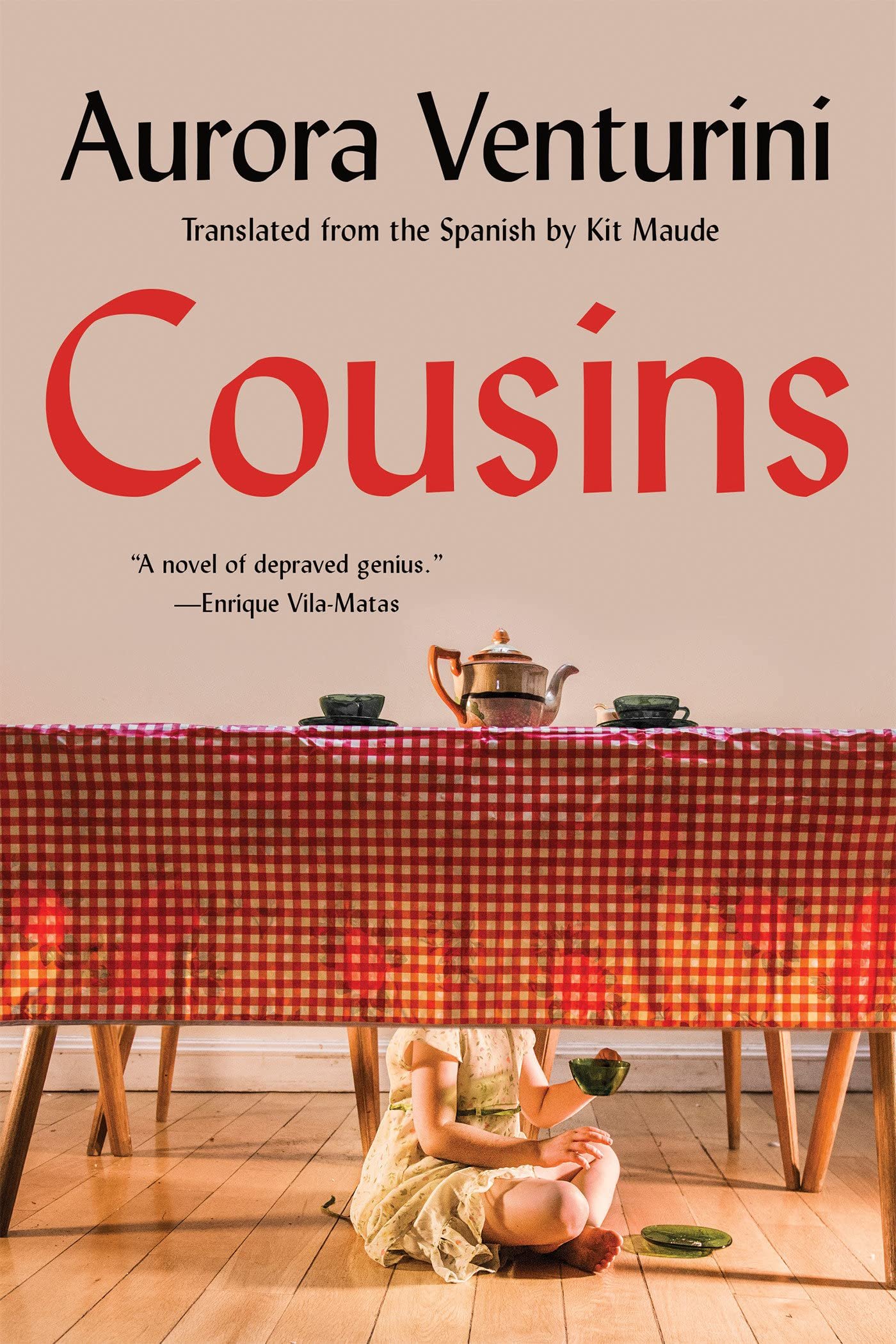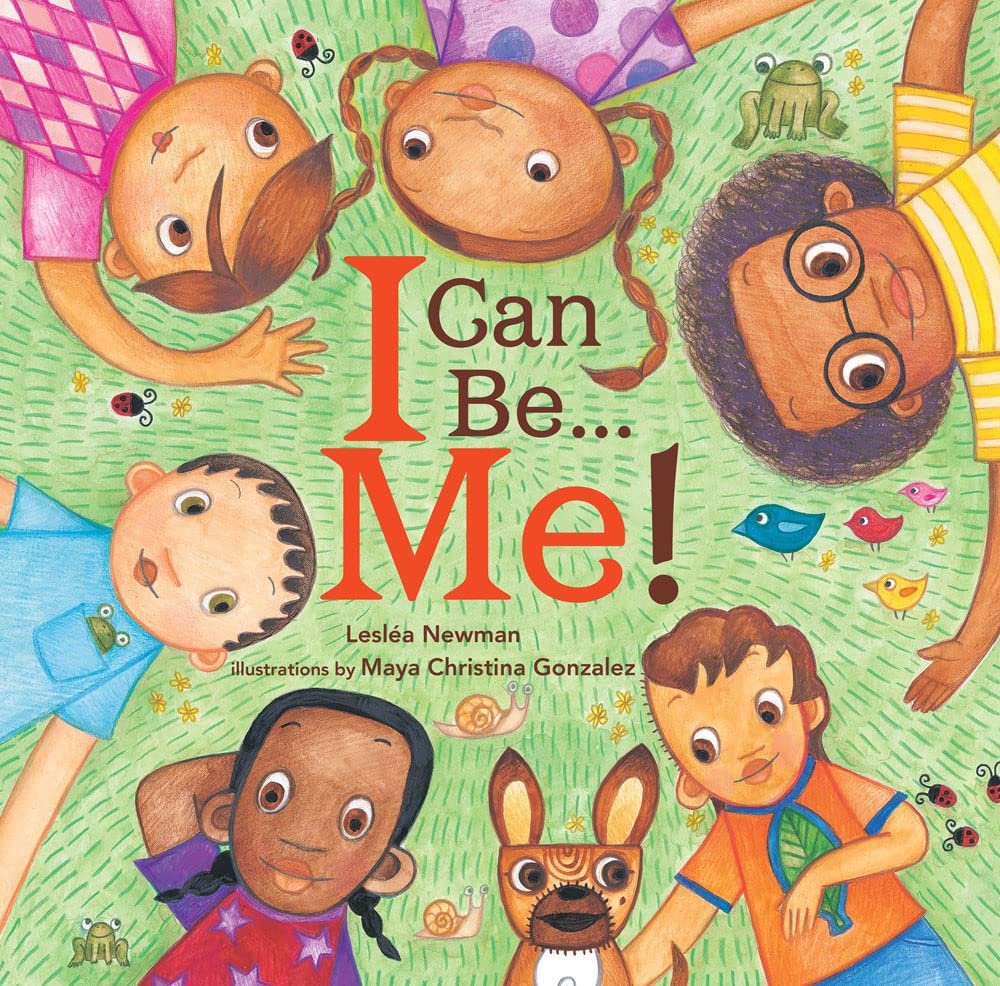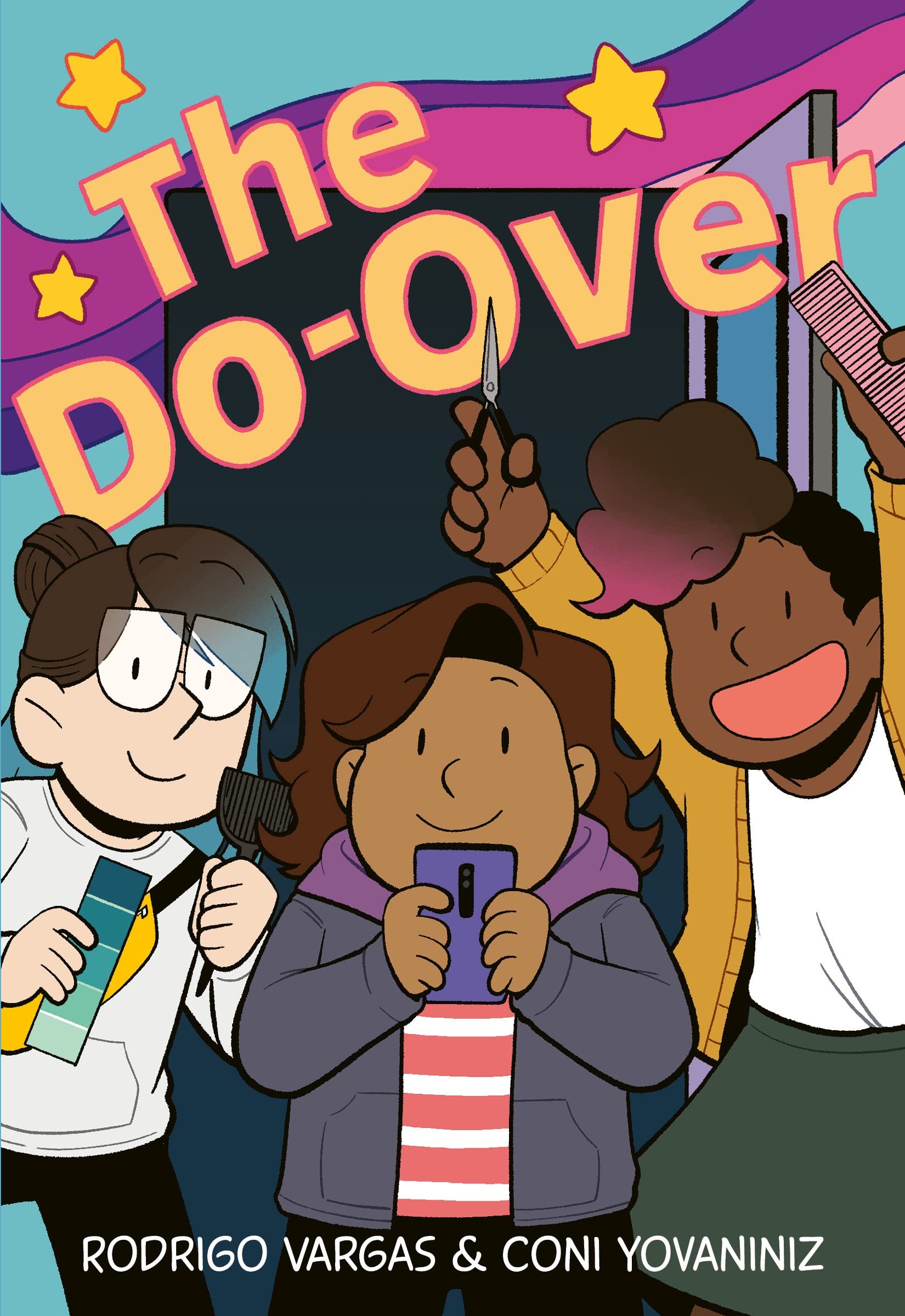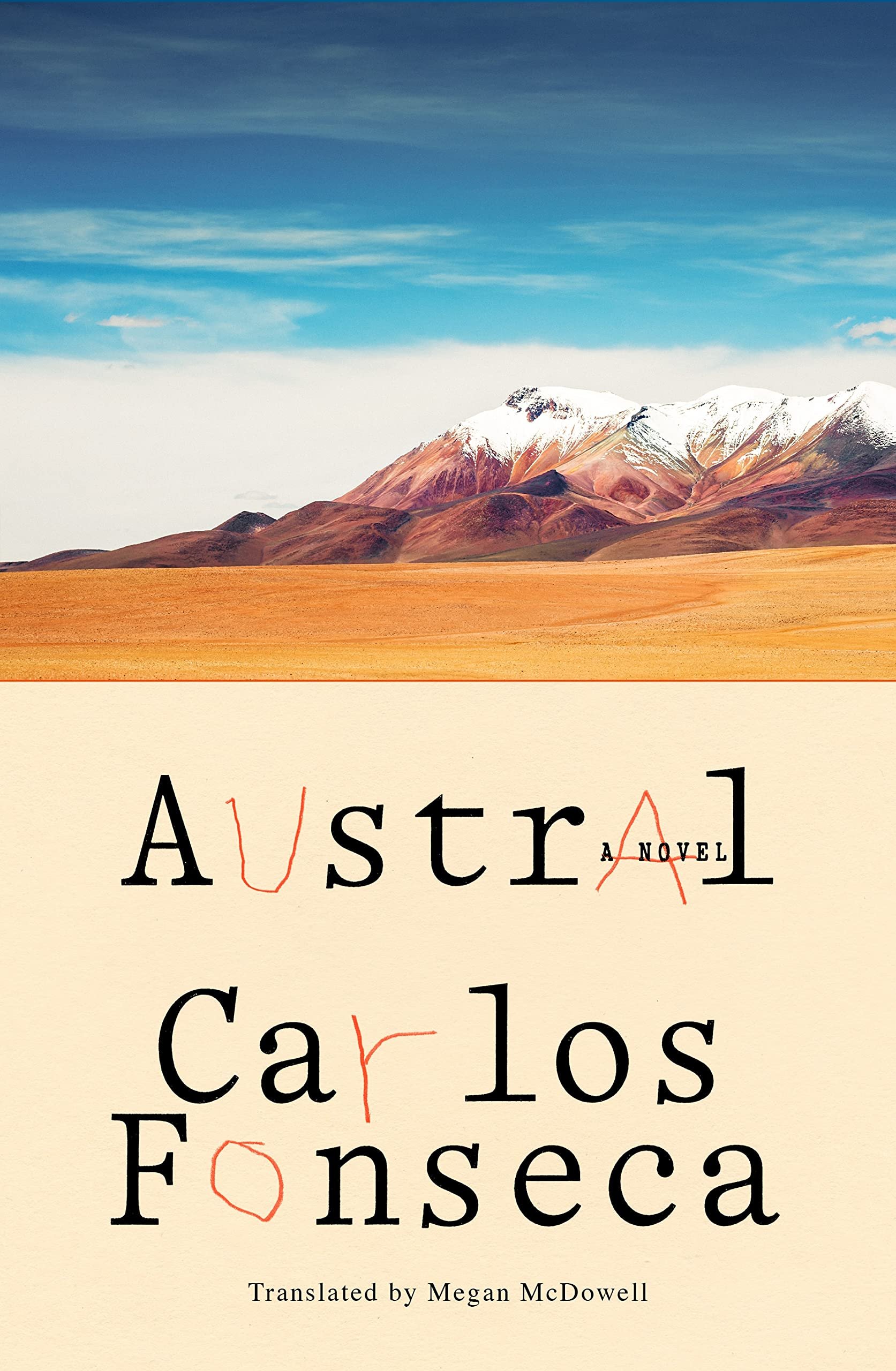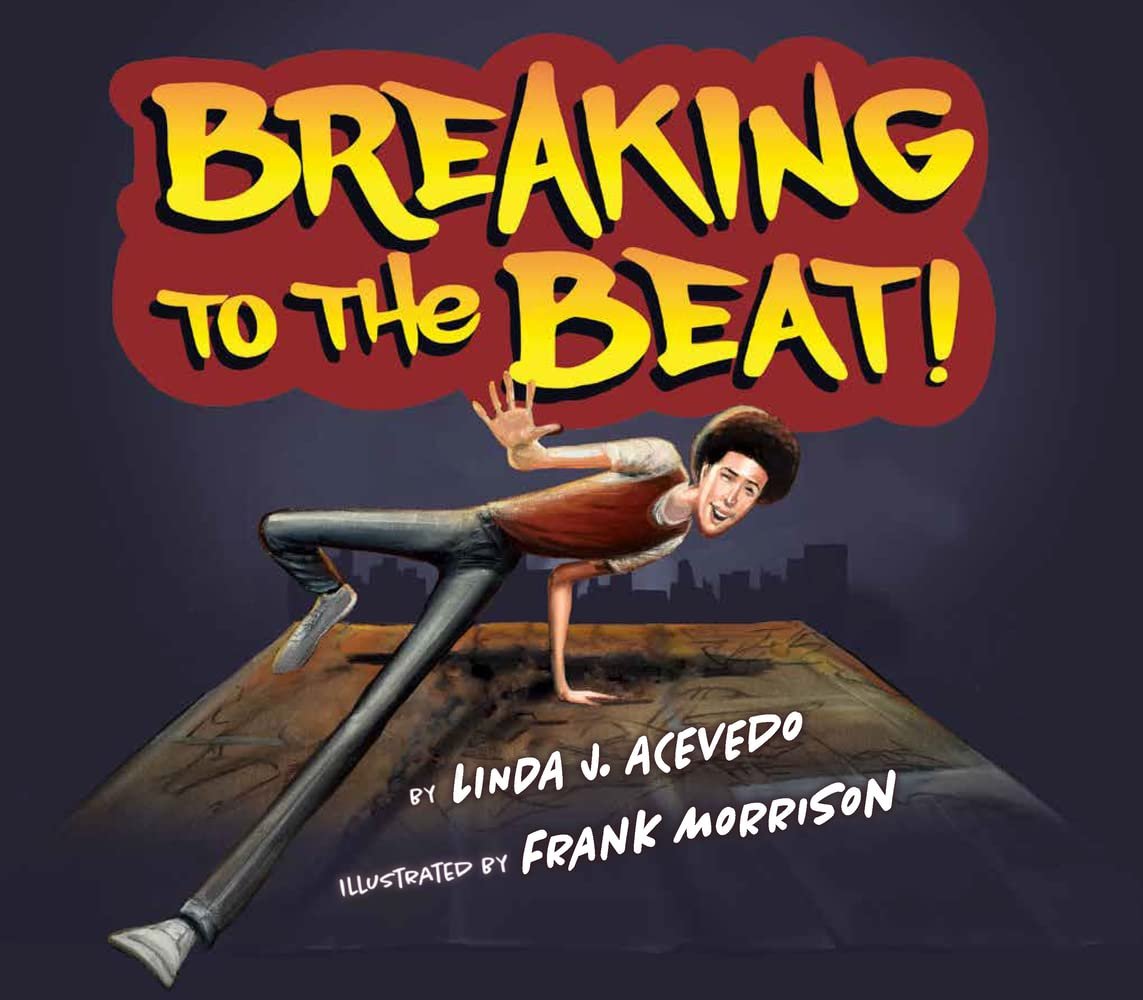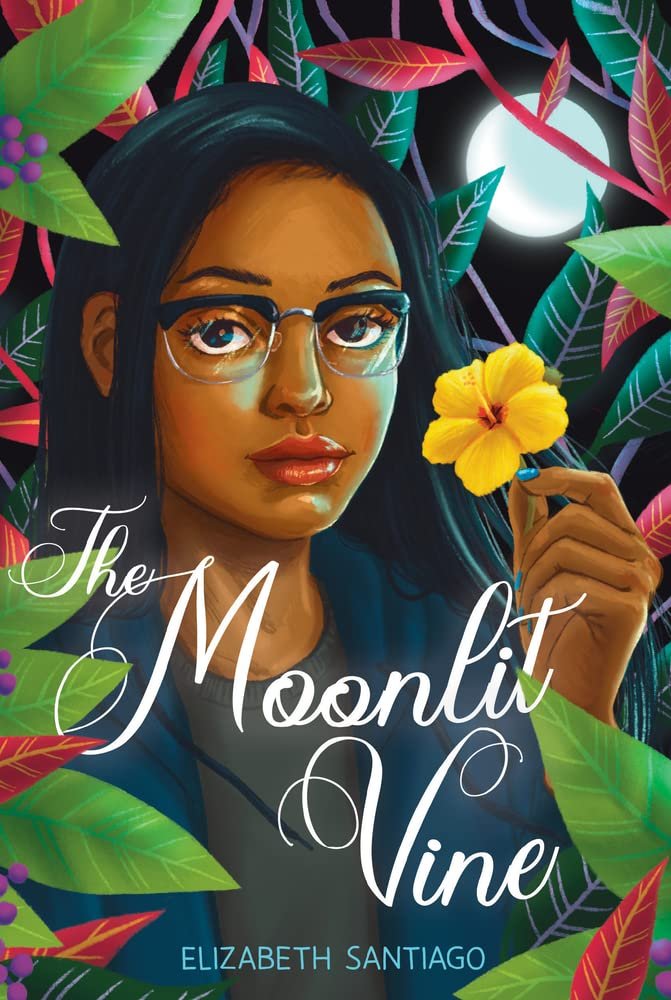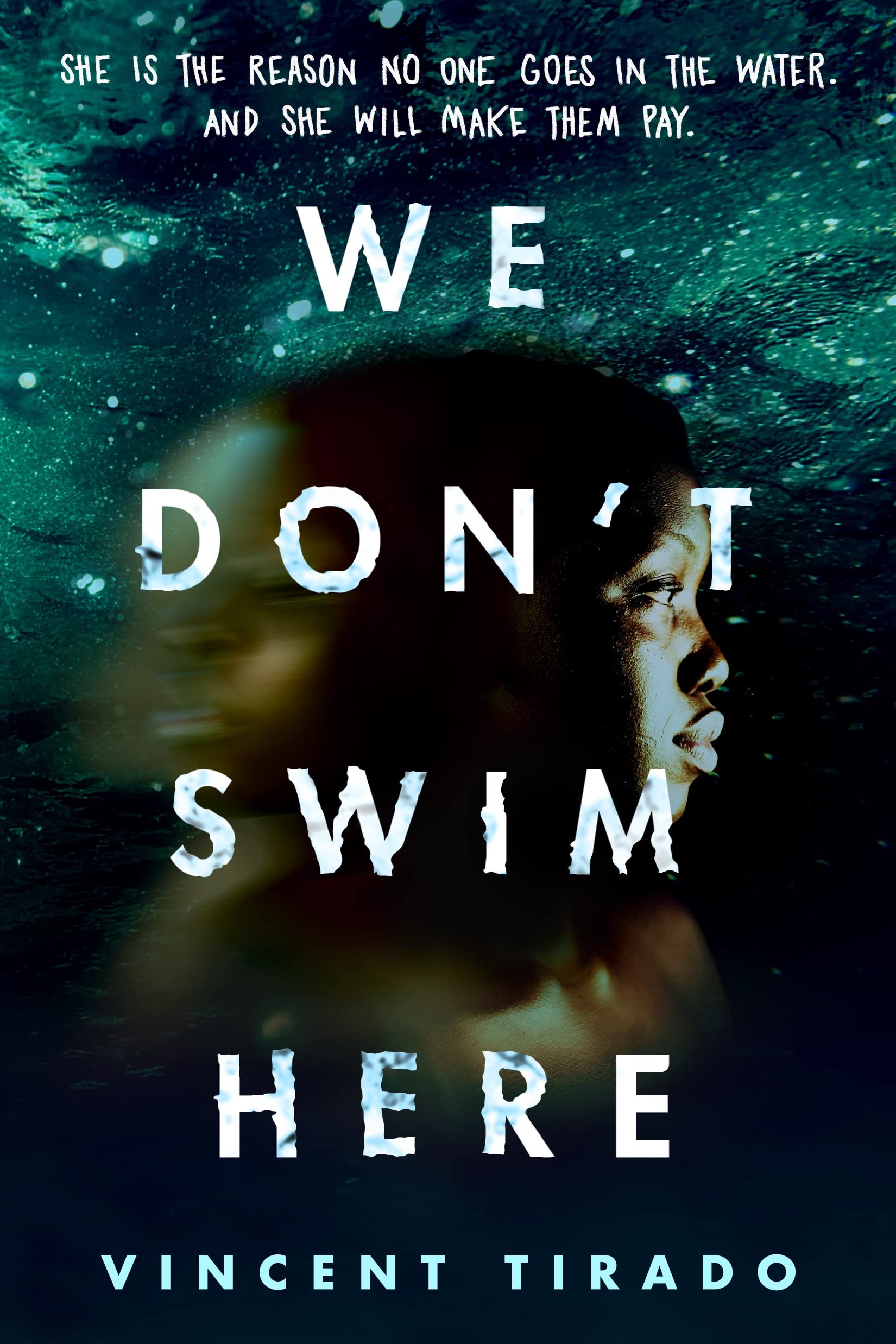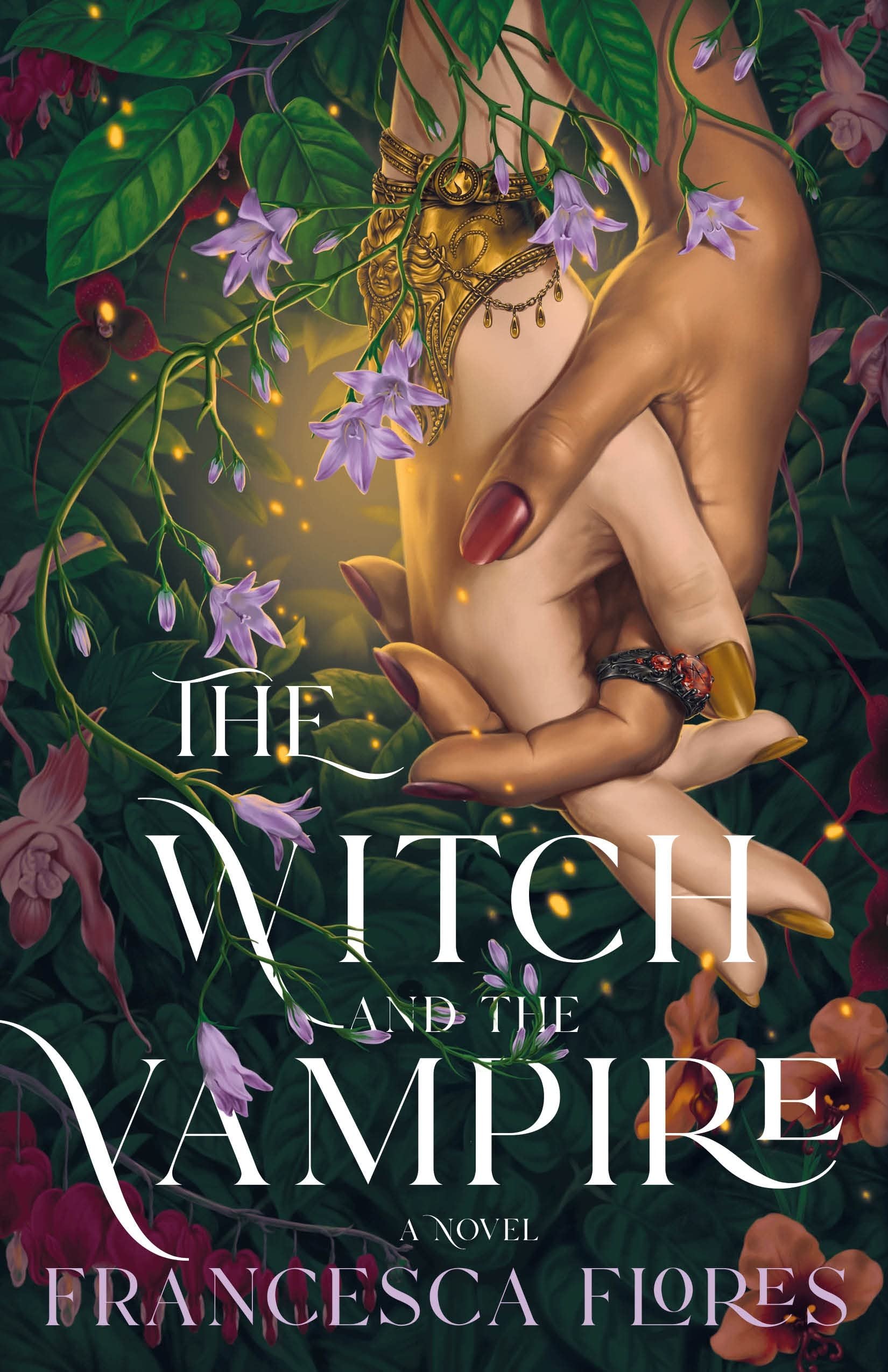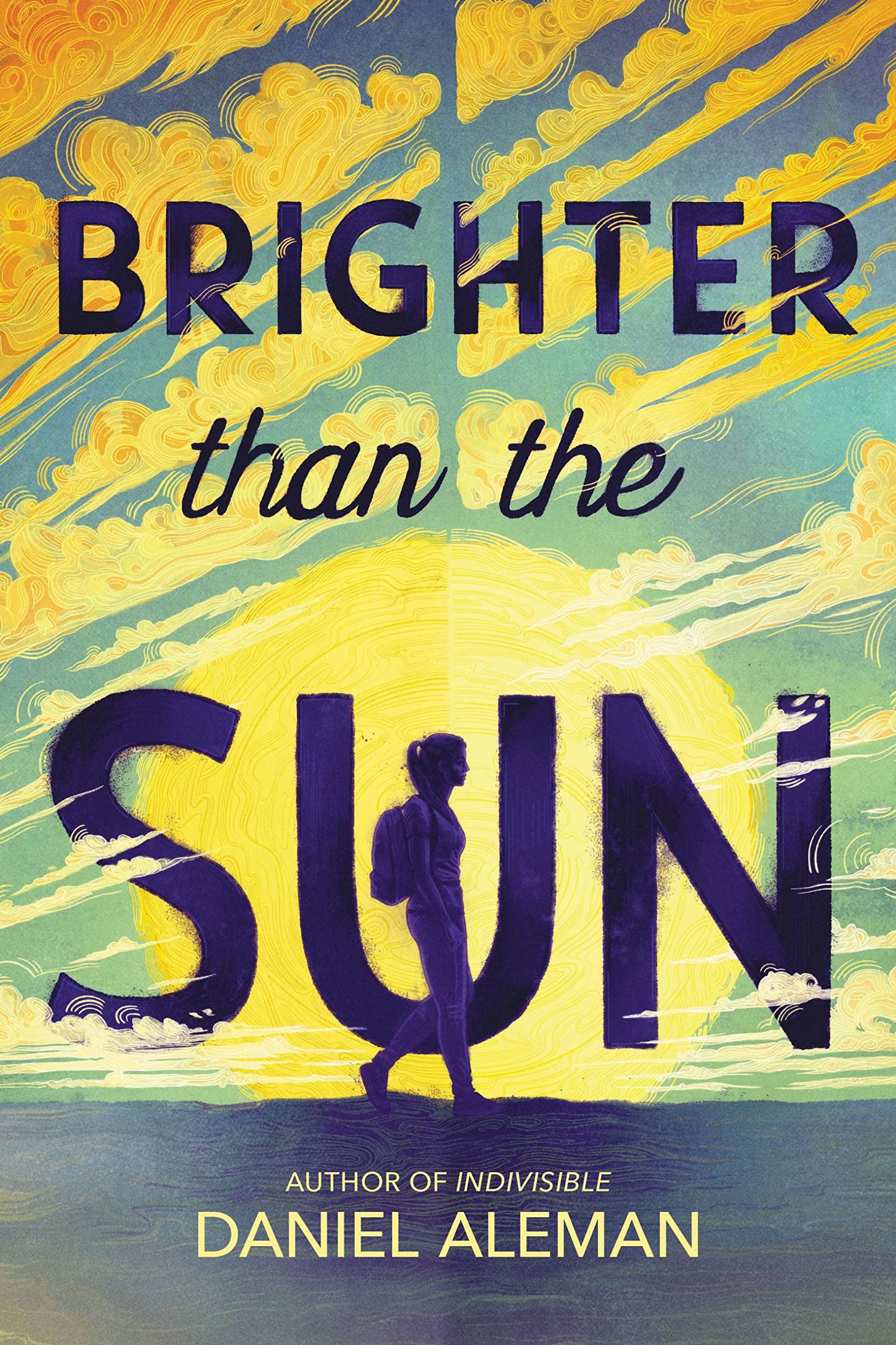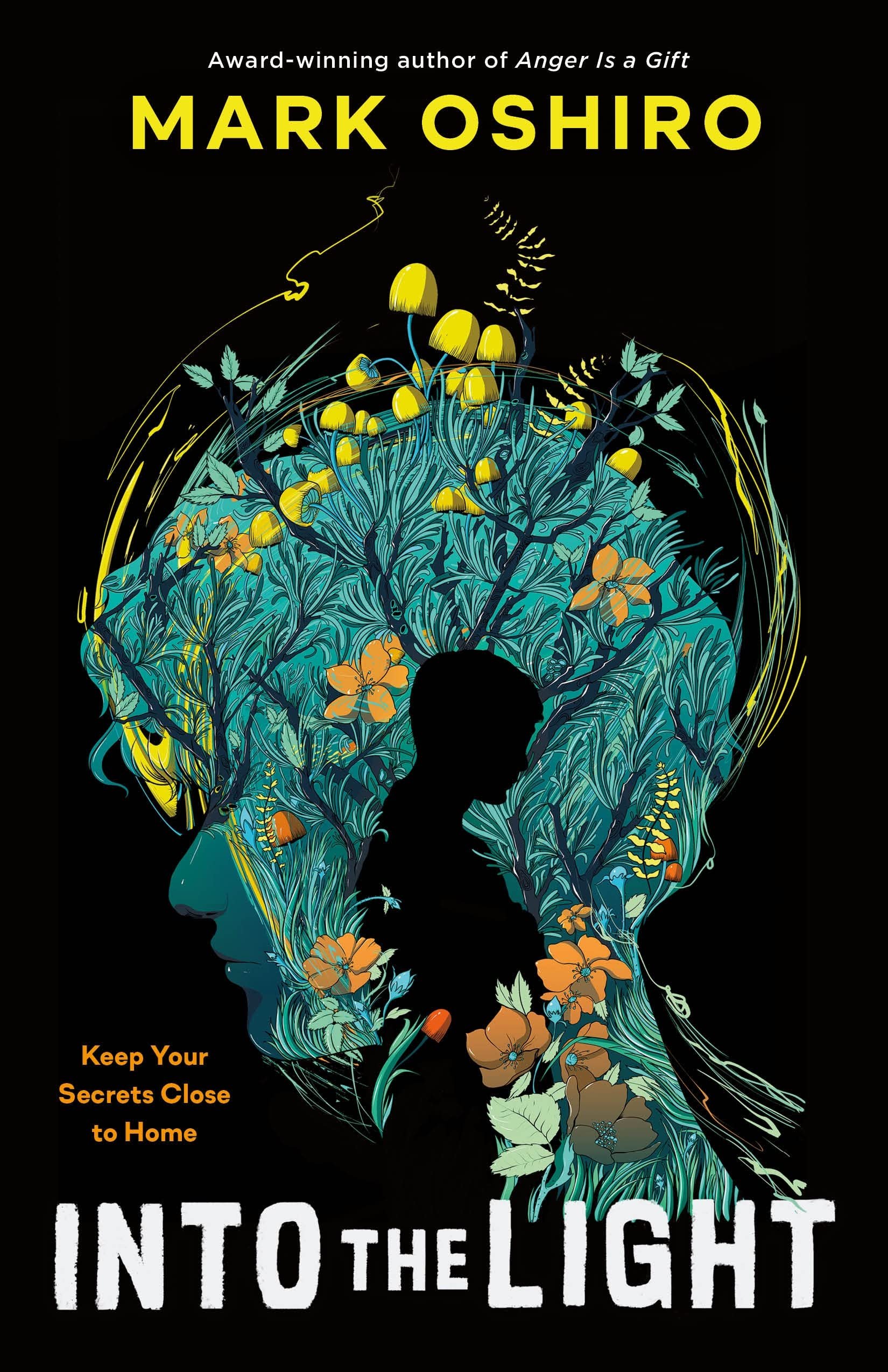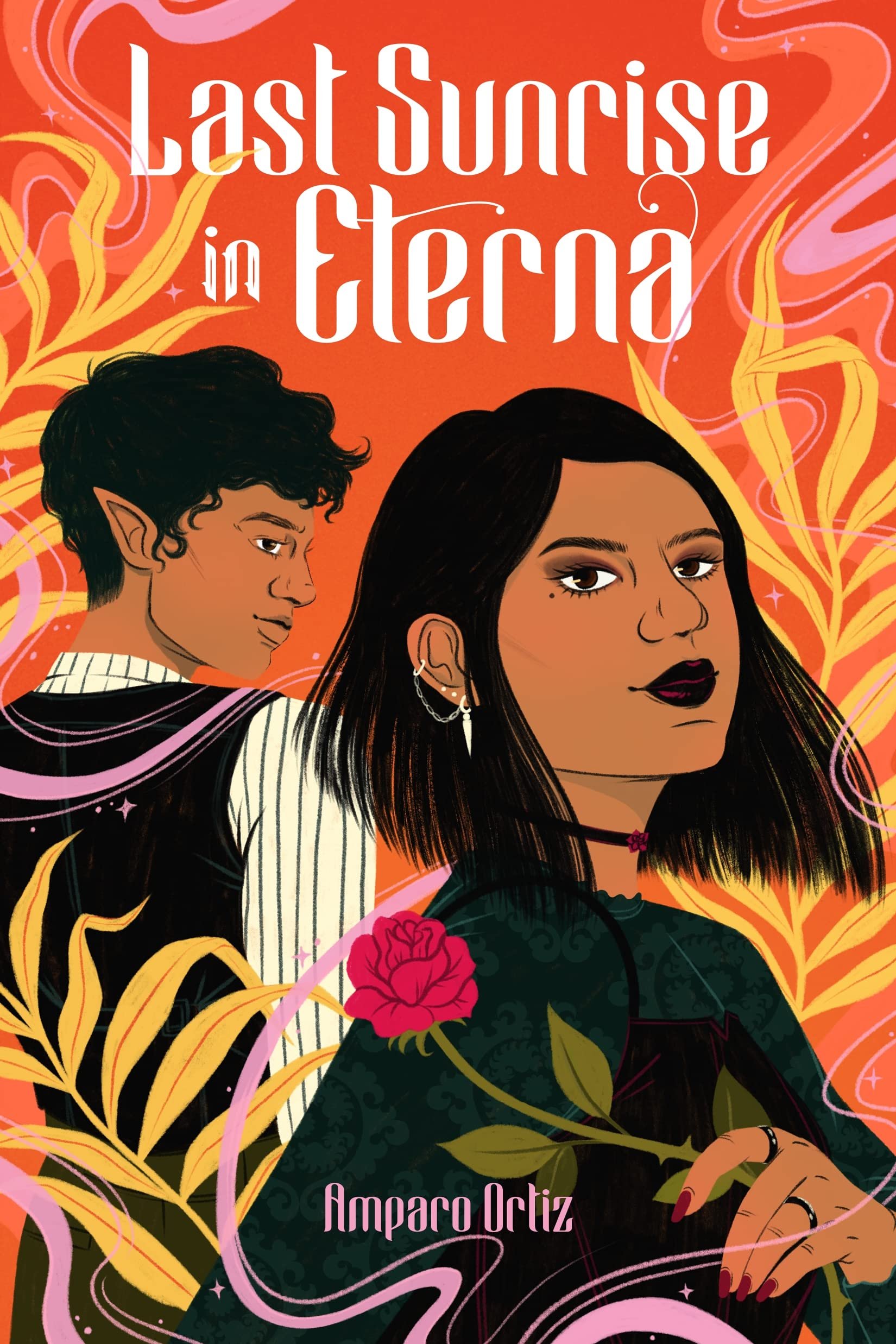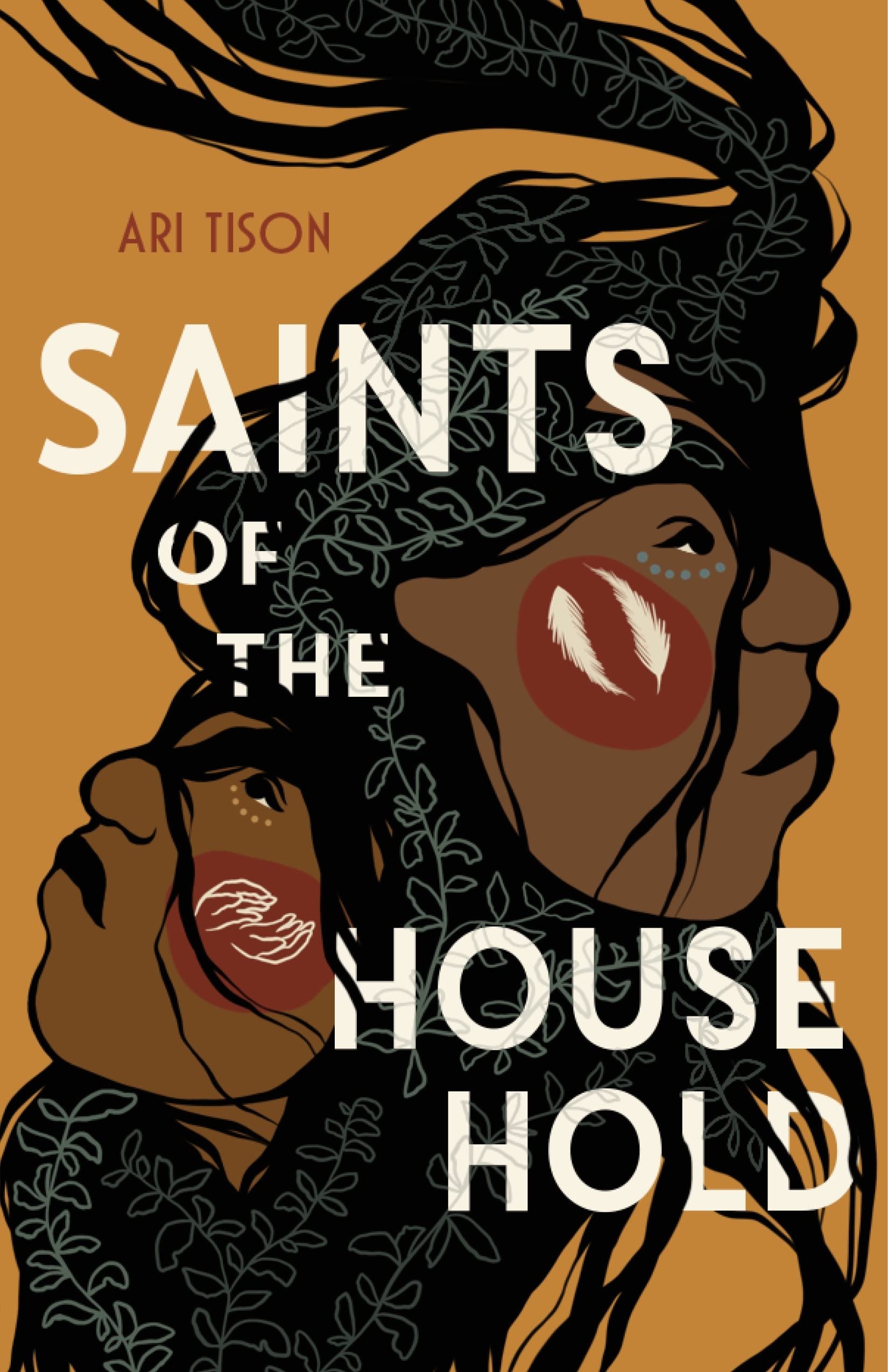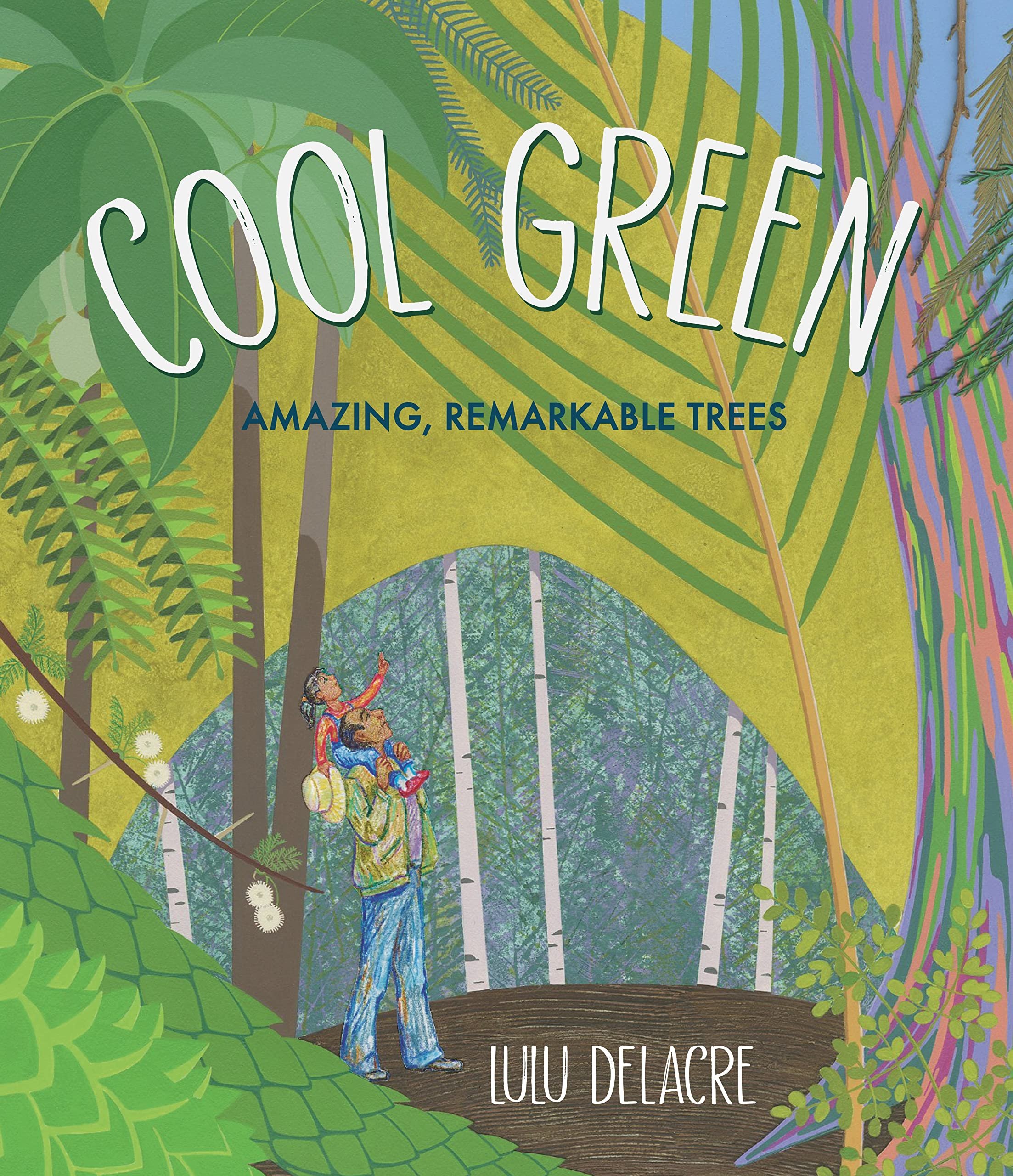On Sale April 1
Covert Joy by Clarice Lispector | ADULT FICTION
This radiant selection of Clarice Lispector's best and best-loved stories includes such familiar favorites as "The Smallest Woman in the World,""Love," "Family Ties," and "The Egg and the Chicken." Lispector's luminous regard for life's small revelatory incidents is legendary, and here her genius is concentrated in a fizzing, portable volume.
Covert Joy offers the particular bliss a book can bring that she expresses in the title story: Joy would always be covert for me... Sometimes I'd sit in the hammock, swinging with the book open on my lap, not touching it, in the purest ecstasy.I was no longer a girl with a book: I was a woman with her lover
Bebé AMA a Mamá / Baby Loves Mom by Chela de la Vega | Illustrated by Teresa Martínez | PICTURE BOOK
A heartwarming and delightful exploration of love, the story takes place in various settings in Latin America and the United States, creating a rich and engaging experience for babies and toddlers.
Through charming illustrations and simple, expressive text, the book celebrates the special bond between babies and their mothers. From playful moments to soothing bedtime routines, Bebé Ama a Mamá / Baby Loves Mom captures the universal language of love, making it a perfect read for families looking to embrace both English and Spanish in their little one's early learning journey.
Gloria by Andrés Felipe Solano | Translated by Will Vanderhyden | ADULT FICTION
It is a bright spring Saturday: April 11, 1970. The famous Argentine singer Sandro is about to become the first Latin American to perform at Madison Square Garden, and Gloria will be one of the lucky attendees at what will be a legendary concert. At just twenty years old, the young woman walks through the electric streets of New York City full of hope and possibility. The disturbing images she recently encountered at her job at a photographic laboratory, the trauma of a father who was murdered when she was a child, and even the long-term prospects of her relationship with Tigre, her irascible boyfriend, are problems for another day. This day should be perfect and should last forever. Which it will, in surprising and unexpected ways.
Five decades later, Gloria’s son reflects on his mother's life and realizes that their formative years—imprinted as they are by sojourns in New York at exactly the same age—are a bridge between generations that draws the pair closer through a shared sense of longing and potential.
Takes One to Know One by Lissette Decos | ADULT FICTION
Daniela is risk-averse, blazer-obsessed, and likes to be taken seriously. So when her record label job is on the line, she's prepared to do anything to keep it. Except for working with the genre of music she hates most: reggaeton. It's supposed to inspire sensual hip-swinging dance moves and Dani's hips do not swing--not like that anyway. Out of desperation, Dani lies and says she loves reggaeton. But not only does Dani get to keep her job, she gets a ticket to Puerto Rico . . . on a mission to clean up the scandalous image of international reggaeton singer Rene 'El Rico' Rodriguez.
Despite her best act, Dani's dislike of his music and Rene's prickly disposition is palpable, resulting in them butting heads at every turn. Yet as the two spend more time together under the island's sizzling sun, Dani realizes there's more to Rene than his rough edges and good looks. The man that many only see as a sex icon actually cares about his music, community, and culture. Against her will, she slowly begins finding him harder to hate. And before she knows it, Rene is teaching Dani how to find the rhythm of the music and learn to let go. But will she ever be ready to acknowledge the heat growing between them and put her heart on the line?
Frida Kahlo's Flower Crown by Nydia Armendia-Sánchez | Illustrated by Loris Lora | PICTURE BOOK
Like a seed / Frida sprouted /
And burst through the earth where / the coyotl once foraged.
Coyoacán was the place where Frida grew.
Told through the language and imagery of the native Mexican flowers and plants comes the life of acclaimed and beloved artist Frida Kahlo. Like a flower, Frida blossomed, wilted, was crushed, survived, and thrived, growing into one of the most celebrated Indigenous painters.
This poetic and empowering picture book, written by Nydia Armendia-Sánchez and illustrated by Pura Belpré Honor awardee Loris Lora, features the very flora Frida grew in her garden, bought at the market in her hometown, painted in her famous portraits, and wore proudly in a crown around her head.
A Carnival of Atrocities by Natalia García Freire | Translated by Victor Meadowcroft | ADULT FICTION
Cocuán, a desolate town nestled between the hot jungle and the frigid Andes, is about to slip away from memory. This is where Mildred was born, and where everything she had—her animals, her home, her lands—was taken from her after her mother’s death. Years later, a series of strange events, disappearances, and outbursts of collective delirium will force its residents to reckon with the legend of old Mildred. Once again, they will feel the shadow of death that has hung over the town ever since she was wronged. The voices of nine characters—Mildred, Ezequiel, Agustina, Manzi, Carmen, Víctor, Baltasar, Hermosina, and Filatelio—tell us of the past and present of that doomed place and Mildred's fate. Natalia García Freire’s vivid language blurs the lines between dreams and reality and transports the reader to the hypnotic Andean universe of Ecuador.
City of Smoke and Sea by Malia Marquez | ADULT FICTION
Queenie Rivers was raised by her grandparents in coastal Los Angeles. As she approaches thirty, her erratic lifestyle is forced back on course by a car accident and her grandmother's intervention.
But her recovery is interrupted by a break-in and Gran's death. Gran's last act was to set Queenie up with a job at an upscale seaside bistro with a shady reputation--the owner of which, it turns out, was once a close friend. As Queenie digs into Gran's past for answers about the break-in, the murder, and the unnerving circumstances surrounding the restaurant and her new boss, she discovers that her grandmother, a Romani Holocaust survivor, kept many secrets, some of them otherworldly--secrets that become hers to unravel when she becomes a suspect in Gran's murder case.
On Sale April 8
Creepy Campfire Stories: Frights to Tell at Night by Anastasia Garcia | Illustrated by Teo Skaffa | MIDDLE GRADE
The great outdoors has never been so terrifying! Featuring iconic landscapes like the Grand Canyon and Redwood National Park, this book will haunt your dreams long after the last ember of the campfire has faded. Here are just a few of the super-scary stories inside:
A strange museum that won't stay open after dark.
Sinister plants with a taste for human flesh.
Monsters hidden in the snow--friend or foe?
Mysterious lights in the sky leave messages in a cornfield.
A winged creature warns of impending doom.
On Sale April 15
Snap! Crunch! Munch? by Diana Castillo |
A little boy comes down for family dinner. There’s food for each member of his picky family: black beans, plantains, flan, and more. Soon his imagination is filled with lions, elephants, and flamingos slurping, crunching, and munching on a delicious dinner.
This early reader graphic novel is perfect for 1st and 2nd graders to read on their own. The simple text and story matches everyone's favorite foods with animals, featuring fun onomatopoeia that kids will want to shout outloud.
Carlito's Butterfly by Angèle Delaunois | Illustrated by Augusto Mora | Translated by Ann Marie Boulanger | PICTURE BOOK
Carlito has recently immigrated and he misses Mexico.
During a walk with his friend Samia, he recognizes a magnificent orange and black butterfly--a monarch! He remembers visiting a forest in Mexico where the monarch butterflies spend the winter. Through the monarch's migratory story, Carlito and Samia realize that they can have two countries to call home, just like the butterflies.
This bilingual book includes full text in both English and Spanish.
The Influencers by Anna-Marie McLemore | ADULT FICTION
What do you really know about the people you’ve made famous?
“Mother May I” Iverson has spent the past twenty-five years building a massively successful influencer empire with endearing videos featuring her five mixed-race daughters. But the girls are all grown up now, and the ramifications of having their entire childhoods commodified start to spill over into public view, especially in light of the pivotal question: Who killed May’s newlywed husband and then torched her mansion to cover it up?
April is a businesswoman feuding with her mother over intellectual property; twins June and July are influencers themselves, threatening to overtake May’s spotlight; January is a theater tech who steers clear of her mother and the limelight; and the youngest . . . well, March has somehow completely disappeared. As the days pass post-murder, everyone has an opinion—the sisters, May, a mysterious “friend of the family,” and the collective voice of the online audience watching the family’s every move—with suspicion flying every direction.
Cómo decirle hola a una lombriz: Primera guía al aire libre (How to Say Hello to a Worm: A First Guide to Outside) by Kari Percival | Translated by Yanitzia Canetti | PICTURE BOOK
The beautiful simplicity of a garden is depicted through digital woodcut illustrations and engaging nonfiction text presented as a series of sweet questions and gentle replies. Less of a traditional how-to and more of a how-to-appreciate, this soothingly sparse text paints an inviting and accessible picture of what a garden offers. And with an all-child cast, the absence of an adult presence empowers readers to view the garden and its creatures through their own eyes, driven by curiosity and wonder.
This delightful book embodies the magic of gardening and encourages all readers, from those who LOVE the outdoors to those with hesitation, to interact with nature at their own, comfortable pace.
Futbolista by Jonny Garza Villa | YOUNG ADULT
Gabriel Piña knows who he is: a college goalkeeper, a future Liga MX or MLS star, and definitely straight. He's starting his freshman year with a lot of eyes on him and even more potential, but he's got this. Nothing will have him straying off the path to greatness.
That is, until his philosophy classmate Vale volunteers to tutor him. Vale, the same guy who Gabi, in a moment of history repeating itself, might've kissed very briefly--and only once--just to help him out at a party. Vale, the smart, supportive, compassionate new friend with beautiful brown eyes and a smile that keeps Gabi, for completely inexplicable reasons, constantly in a daydream.
As a friendship blooms and the two spend more and more time together, Gabi finally begins to recognize something about himself: maybe he's not as straight as he thought he was. But a larger and darker realization lingers. Someone like Gabi--a brown, Mexican futbolista with dreams of playing for El Tri--can't also be bisexual. He's seen the way his teammates and community react to queerness in their sport. It would be the exact type of straying off path that destroys his future.
Or, maybe Gabi could be brave enough to embrace all those parts of himself and forge his own path, one that includes a boyfriend and the beautiful game.
Tío and Tío: The Ring Bearers by Ross Mathews and Dr. Wellinthon García-Mathews | Illustrated by Tommy Doyle | PICTURE BOOK
Evan and Andy are excited to visit Mexico for their uncles’ wedding—and their parents are excited that the boys will have a chance to experience the culture, practice their Spanish, and learn responsibility as ring bearers in the ceremony. Once they arrive, Evan and Andy just want to play soccer, swim, and eat all the great food. However, once the festivities are in full swing and the boys witness the love and happiness between their two tíos, they quickly embrace their role in their uncles’ very special day.
This debut picture book written by Ross Mathews and Dr. Wellinthon García-Mathews, and illustrated by Tommy Doyle, reminds us about the importance of love, family, and embracing one’s cultural identity.
Latinx Comics Studies: Critical and Creative Crossings Edited by Fernanda Díaz-Basteris & Maite Urcaregui | NONFICTION
Latinx Comics Studies: Critical and Creative Crossings offers an intersectional and interdisciplinary approach to analyzing Latinx studies and comics studies. The book draws together groundbreaking critical essays, practical pedagogical reflections, and original and republished short comics. The works in this collection discuss the construction of national identity and memory, undocumented narratives, Indigenous and Afro-Latinx experiences, multiracial and multilingual identities, transnational and diasporic connections, natural disasters and unnatural colonial violence, feminist and queer interventions, Latinx futurities, and more. Together, the critical and creative works in this collection begin to map out the emerging and evolving field of Latinx comics studies and to envision what might be possible in and through Latinx comics.
How to Reach the Moon by Nicolás Schuff | Illustrated by Ana Sender | Translated by Lawrence Schimel | PICTURE BOOK
Emilio loves spending vacations out in the forest at his abuelo's house. The woods are mysterious, and Abuelo and Emilio can dine outside by the light of a lantern every night. And then, best of all, Abuelo tells his fantastical stories! One night, when there's a full moon, Abuelo suggests they go and meet the moon. At first, Emilio isn't sure he's serious--but Abuelo is a true adventurer! And so the two, boy and grandfather, set off on their mission. But what creatures might await them in the forest? And will they really get to see the moon?
Cristina Plays by Micaela Chirif | Illustrated by Paula Ortiz | Translated by Lawrence Schimel | PICTURE BOOK
Cristina explores ordinary tasks like eating and tidying and makes curious discoveries before tumbling into sleep and visiting a fantastical dream world. Cristina Plays sweeps the reader into a clever game where Cristina might be a toy rabbit in a doll house or the child playing with it.
On Sale April 22
The Reel Wish by Yamile Saied Méndez | MIDDLE GRADE
Ballet is Florencia del Lago's entire world. After years of hard work, she is chosen as Clara in the winter production of The Nutcracker. Not only is she the youngest dancer to receive such an honor but also the first Latina. She's on track to be recruited by the best ballet companies.
Unfortunately, she suffers a panic attack on opening night--on stage, in front of everyone. And then Selena, Florencia's best friend, steps right into the role to replace her. Just like that, Florencia's whole world falls apart--the ballet studio expels her, and her best friend turns on her, tormenting her on social media and in real life.
But even though the one thing she was driven toward has come to an end, therapy and family support help Florencia open up to new experiences. She notices people at school she's never paid attention to before, and she even stumbles upon an Irish dance school and decides to give it a try. Can a new passion for Irish dance help Florencia find the joy of performing on the stage that she lost that fateful winter night?
Don't miss the Spanish-language edition of this book, El Deseo de Mi Corazón.
Echoes of the Water War: Legacies of Cochabamba, Bolivia by Oscar Olivera | NONFICTION
Water is life! From the frontlines of the greatest popular rebellion against the privatization of water comes the triumphant grassroots story of ordinary people in Cochabamba, Bolivia who became water warriors. As Echoes of Cochabamba shows in vivid detail, the 2001 "water wars" was an explosion of democracy and human rights regained by the masses, which won popular control of water supply and defied all odds by driving out the transnational corporation that had stolen their water in the first place.
Oscar Olivera, a trade union machinist who helped shape and lead a movement that brought thousands of ordinary people to the streets, powerfully conveys the perspective of a committed participant in a victorious and inspirational rebellion.
With hard-won political savvy, Olivera reflects on major themes that emerged from the war over water: the fear and isolation that Cochabambinos faced with a spirit of solidarity and mutual aid; the challenges of democratically administering the city's water supply; and the impact of the water wars on subsequent resistance.
If We Were a Movie by Zakiya N. Jamal | YOUNG ADULT
Lights. Camera. Love?
Rochelle “the Shell” Coleman is laser focused on only three things: becoming valedictorian, getting into Wharton, and, of course, taking down her annoyingly charismatic nemesis and only academic competition, Amira Rodriguez. However, despite her stellar grades, Rochelle’s college application is missing that extra special something: a job.
When Rochelle gets an opportunity to work at Horizon Cinemas, the beloved Black-owned movie theater, she begrudgingly jumps at the chance to boost her chances at getting into her dream school. There’s only one problem: Amira works there…and is also her boss.
Rochelle feels that working with Amira is its own kind of horror movie, but as the two begin working closely together, Rochelle starts to see Amira in a new light, one that may have her beginning to actually…like her?
But Horizon’s in trouble, and when mysterious things begin happening that make Horizon’s chances of staying open slimmer, it’s up to the employees to solve the mystery before it’s too late, but will love also find its way into the spotlight?
The Summer I Ate the Rich by Maika Moulite & Maritza Moulite | YOUNG ADULT
Brielle Petitfour loves to cook. But with a chronically sick mother and bills to pay, becoming a chef isn’t exactly a realistic career path.
When Brielle’s mom suddenly loses her job, Brielle steps in and uses her culinary skills to earn some extra money. The rich families who love her cooking praise her use of unique flavors and textures, which keep everyone guessing what’s in Brielle’s dishes. The secret ingredient? Human flesh.
Written by the storytelling duo Maika Moulite and Maritza Moulite, The Summer I Ate the Rich is a modern-day fable inspired by Haitian zombie lore that scrutinizes the socioeconomic and racial inequity that is the foundation of our society. Just like Brielle’s clients, it will have you asking: What’s for dinner?
Juana y Lucas: Grandes problemas by Juana Medina | Translated by Eida DelRisco | PICTURE BOOK
Juana’s life is just about perfect. She lives in the beautiful city of Bogotá with her two most favorite people in the world: her mami and her dog, Lucas. Lately, though, things have become a little less perfect. Mami has a new hairdo and a new amigo named Luis with whom she has been spending a LOT of time. He is kind and teaches Juana about things like photography and jazz music, but sometimes Juana can’t help wishing things would go back to the way they were before. When Mami announces that she and Luis are getting married and that they will all be moving to a new casa, Juana is quite distraught. Lucky for her, though, some things will never change—like how much Mami loves her. Based on author-illustrator Juana Medina’s own childhood in Colombia, this joyful series is sure to resonate with readers of all ages.
Property of the Revolution: From a Cuban Barrio to a New Hampshire Mill Town by Ana Hebra Flaster | NONFICTION
Ana Hebra Flaster was six years old when her working-class family was kicked out of their Havana barrio for opposing communism. Once devoted revolutionaries themselves but disillusioned by the Castro government’s repressive tactics, they fled to the US. The permanent losses they suffered—of home, country, and loved ones, all within forty-eight hours—haunted her multigenerational family as they reclaimed their lives and freedom in 1967 New Hampshire. There, they fed each other stories of their scrappy barrio—some of which Hebra Flaster has shared on All Things Considered—to resurrect their lost world and fortify themselves for a daunting task: building a new life in a foreign land.
Weaving pivotal events in Cuba–US history with her viejos’—elders’—stories of surviving political upheaval, impossible choices, and “refugeedom,” Property of the Revolution celebrates the indomitable spirit and wisdom of the women warriors who led the family out of Cuba, shaped its rebirth as Cuban Americans, and helped Ana grow up hopeful, future-facing—American. But what happens when deeply buried childhood memories resurface, demanding an adult’s reckoning?
On Sale April 29
Bloodletting by Kimberly Reyes | POETRY
This is a collection of poems about how we find and cultivate love amid wars, including wars that often go ignored. Throughout Bloodletting, Kimberly Reyes considers how we define love and who gets to experience it, paying special attention to the ways that race and sex influence how we are perceived and valued by society. Through the voice of a Black woman coming to terms with her own perspectives on relationship-building, Reyes shows the damage that contemporary culture can do to women, and Black women in particular. Resisting passivity, Reyes's poetry cuts through pervasive doom scrolling, virtue signaling, and parasocial relationships, inviting readers to remember what care is really supposed to feel like.
Latine Herbalism: A Beginner's Guide to Modern Curanderismo, Healing Plants, and Folk Traditions of the Americas by Iosellev Castañeda | NONFICTION
Delve into the healing traditions of Latine folk herbalism and modern curanderismo with this all-in-one guidebook offering a fusion of time-honored and contemporary practices. Latine Herbalism details the medicinal power of herbs and plants, their origins, and their most common uses while also exploring the folk traditions from sacred locations in the US, Mexico, and South America. This book even goes one step further, helping you navigate through the most common afflictions of body and mind, from digestive issues to stress management and beyond, with remedios y rituales such as:
Breath vibrations
Heart vibrations
Spirit of the flowers
Moon energy
And more
Authored by a passionate advocate and practitioner, this book explores and honors the nuanced realms of curanderismo and Latine herbalism.
Dreams in Times of War / Soñar En Tiempos de Guerra: Stories / Cuentos by Oswaldo Estrada| Translated by Sarah Pollack | ADULT FICTION
In twelve stories, Dreams in Times of War / Soñar en tiempos de guerra brilliantly fictionalizes the lives of Latinx immigrants in the United States. The stories explore themes of violence including toxic masculinity, domestic abuse, and (trans)gender discrimination but also the alternative communities the characters form that offer solidarity and hope. Readers will celebrate this unflinching but heartfelt look at diverse immigrant experiences in the twenty-first century United States.
Theory of the Rearguard: How to Survive Contemporary Art (and Almost Everything Else) by Iván de la Nuez | Translated by Ellen Jones | NONFICTION
Theory of the Rearguard examines how contemporary art is in tension with survival, rather than in relation to life. In the twentieth century, Peter Bürger’s Theory of the Avant-Garde was a cult book focused on the two main tasks that art demanded at the time: to break its representation and to destroy the barrier that separated it from life.
Forty years later, The Theory of the Rearguard is an ironic manifesto about contemporary art and its failures, even though Iván de la Nuez does not waste his time mourning it or disguising it. He argues that our times are not characterized by the distance between art and life, but by a tension between art and survival, which is the continuation of life by any means necessary.
In the twenty-first century, Iván de la Nuez examines art in relationship to politics, iconography, and literature. This austere and sharp book—in which Duchamp stumbles upon Lupe, the revolution upon the museum, Paul Virilio upon Joan Fontcuberta or Fukuyama upon Michael Jackson—wonders if contemporary art will ever end. Because if it were mortal—“just as mortal as everything it invokes or examines under its magnifying glass”—de la Nuez argues would be worth writing an epitaph for it as he has done in this sparkling book of art criticism.
Fix-It Familia by Lucky Diaz | Illustrated by Micah Player | PICTURE BOOK
No job is too big, no task is too small. We’re the Fix It Familia. We help one, we help all!
Chavo and his family are always there to lend a helping hand. So when the main parade float crashes at a neighborhood fiesta, Chavo has the perfect plan to help his community. With a load of creativity and a truck full of love, nothing can stop Chavo’s ideas from becoming reality!
This empowering tale of resilience, community, and the power of creativity is perfect for lovers of all things construction tools and trucks.
The book includes Spanish words and phrases throughout and an author’s note from Lucky Diaz about his inspiration behind the story.
A Necklace of Ears by Alberto Roblest | ADULT FICTION
After leaving the artificial charm of Las Vegas behind, Sergio makes a living working at a military base. While repairing houses and maintaining the complex's gardens, he enters the lives of characters as diverse as married women in need of a sexual encounter--who are marked by the absence of their husbands at the front--and veterans who carry the echoes of war, facing ghosts that never fade away.
In a bold narrative game, the reader becomes an accomplice to the clandestine encounters and gossip of the military base. With a provocative tone, Alberto Roblest invites us to witness the human dynamics that unfold in this microcosm: the unbridled flirtation of the playboy protagonist and the stories that are whispered in the shadows.
As relationships blossom and wither, Sergio is presented as an enigma: in sudden dreams--or hazy memories--we find him wandering through the desert, a collar made of ears hanging from his neck. The haunting question persists: to whom do these ears belong?




